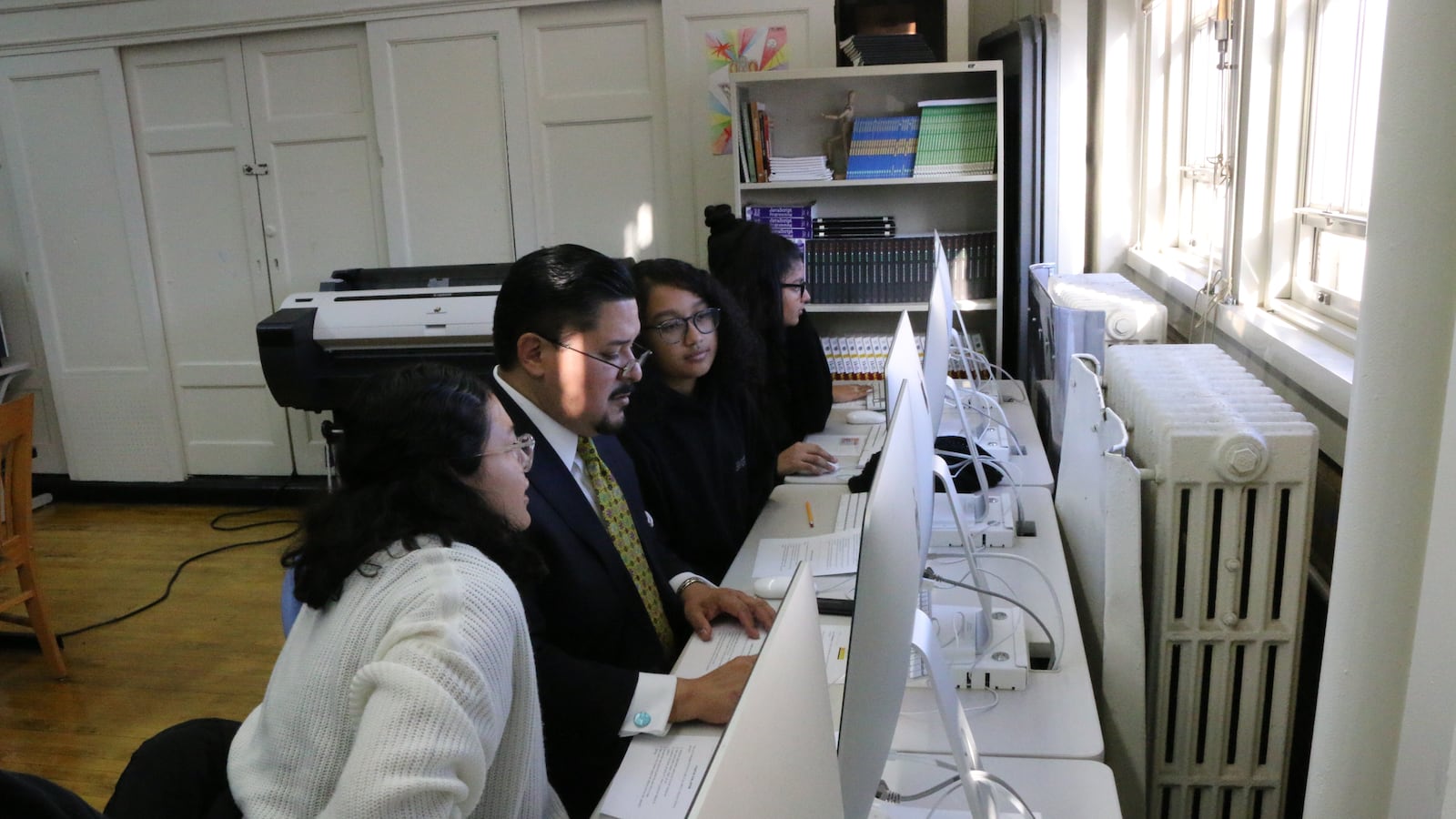Schools Chancellor Richard Carranza has named a veteran New York City educator as the new head of its department that oversees students learning English as a new language.
Mirza G. Sánchez-Medina, the founding principal of Manhattan Bridges High School, will be the new deputy chief academic officer of what will now be the Division of Multilingual Learners, the city education department announced in a news release. It was previously called the Division of English Language Learners and Student Support.
“As the founding principal of Manhattan Bridges High School, Mirza has empowered multilingual learners to learn a new language and achieve to their greatest potential without sacrificing their home languages and cultures,” Carranza said in a prepared statement. “The work of lifting up our multilingual learners is deeply personal to me, and I have no doubt Mirza will serve as a key resource for our families across the City and an ally in our efforts towards Equity and Excellence for All.”
Sánchez-Medina replaces Milady Baez, who left the department this summer. When Carranza announced sweeping changes to the department’s leadership structure in June, officials told Chalkbeat only that Baez had “transitioned out of her role.”
Sánchez-Medina started her career 30 years ago as a chemistry, biology, math, physics and environmental science teacher in Luquillo and Rio Grande, Puerto Rico.
In 1998, she arrived in New York City schools and became the assistant principal of organization and administration at Martin Luther King Jr. High School. In 2003, she became the founding principal of Manhattan Bridges High School, where she worked with students who primarily spoke Spanish.
Almost half of Manhattan Bridges’ student body is English language learners, according to department data.
According to the city, Manhattan Bridges’ English language learners transition out of that status at faster rates than students citywide. The school’s most comprehensive quality report — from the 2014-2015 school year — characterizes its curriculum for English language learners as rigorous and well-developed.
In an interview with Chalkbeat, Sánchez-Medina said helping families navigate the school system is among her first-year goals.
“How do we ensure students are ready for college? How do we develop plans for families to be able to continue success throughout, regardless of what grade the child is in,” she added.
English language learners continued to lag behind others in state test scores this year: almost 10 percent of students learning English as a new language passed reading exam and 10 percent passed math exams.
State and city officials have disagreed about how severe the academic gulf is between these students their peers.
Sánchez-Medina did not say what she would change about the division she will now oversee, instead saying that it has provided her school with support when she needed it. But part of the work she will do, she said, will be “validating the students’ culture” and honoring their home language.
Officials decided to rename the department as a way to “ensure all students master English while honoring and supporting their multilingualism, home language, and culture,” the news release said.
At an unrelated event on Thursday, when asked a question about English language learners, Carranza said, “I stopped referring to folks as English Language Learners. I call them future bilingual learners or future bilingual students or multilingual learners.”
Carranza has expressed interest in improving outcomes for students learning English as a new language and has noted several times that he, too, was an English language learner. One of his first policy announcements in May was the addition of almost 50 bilingual education programs.

